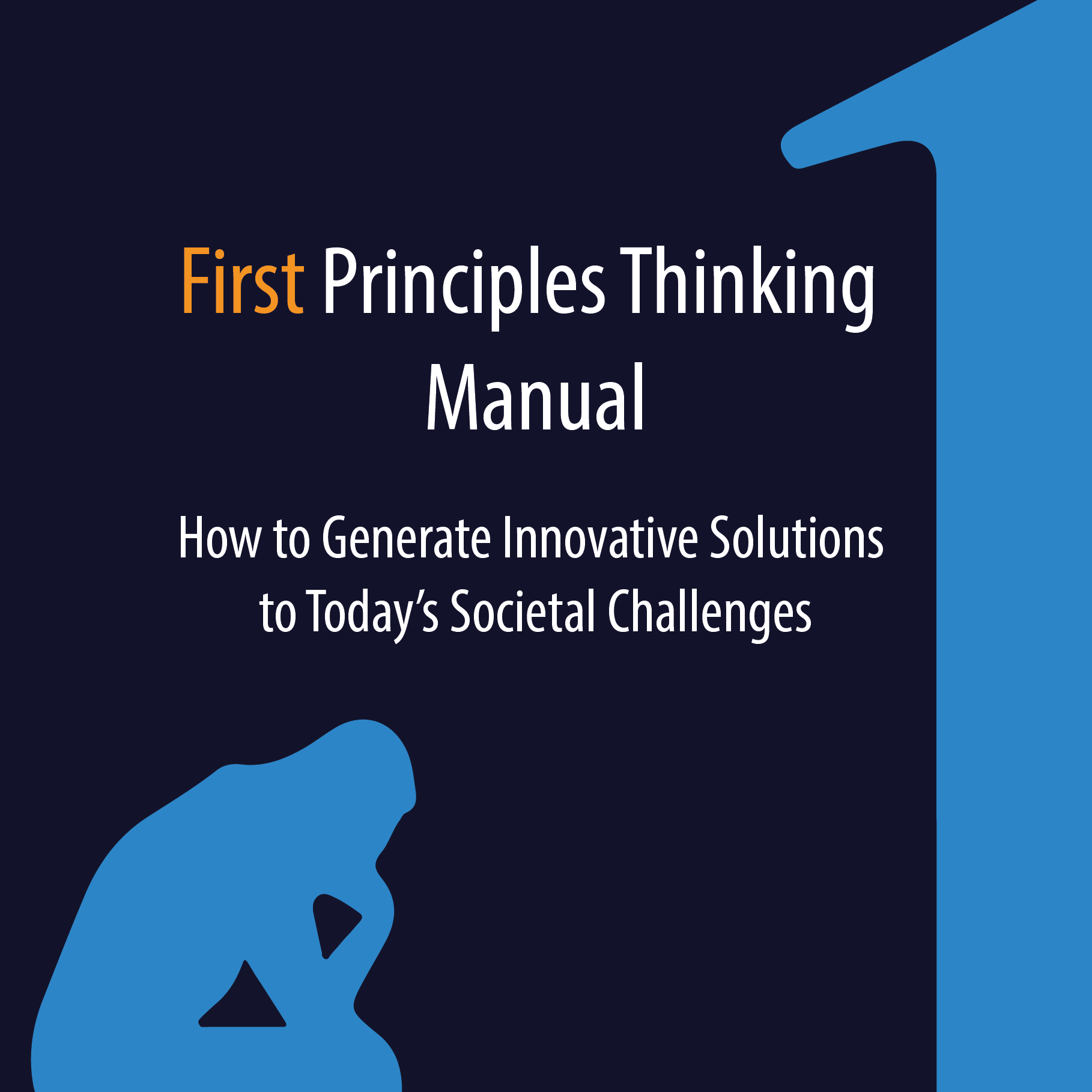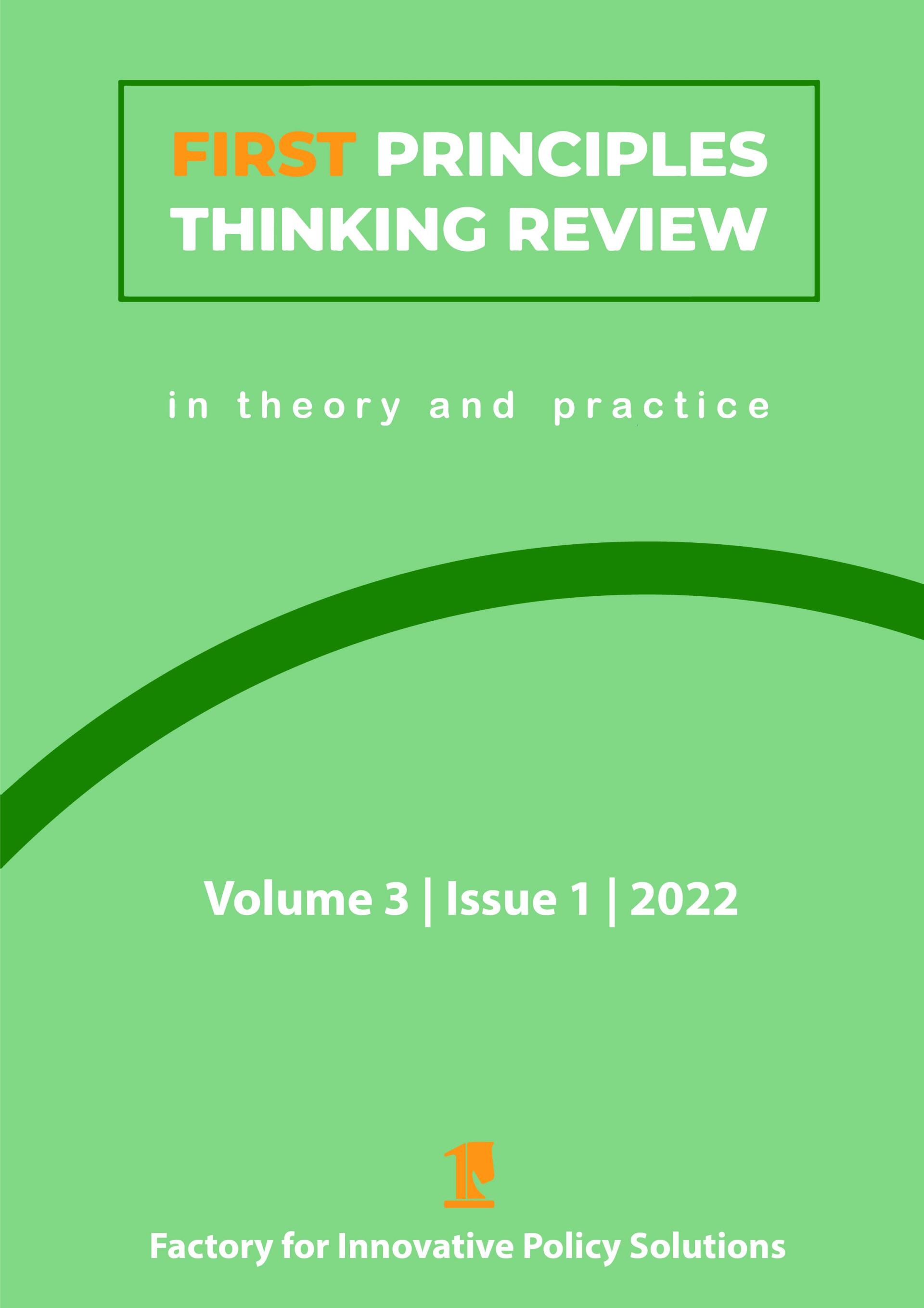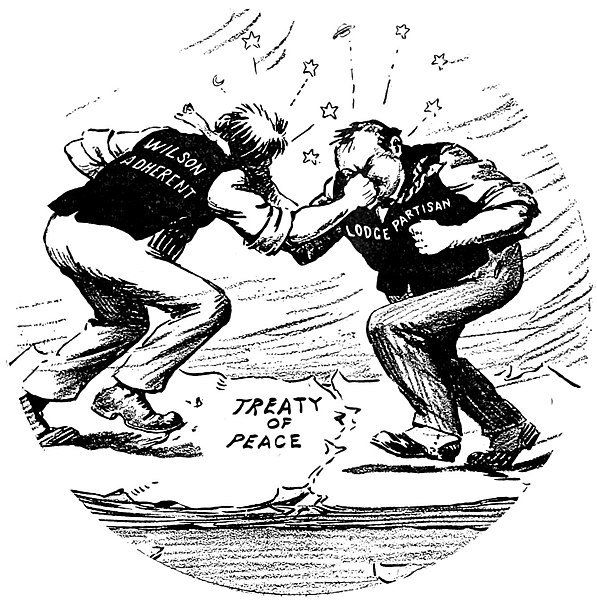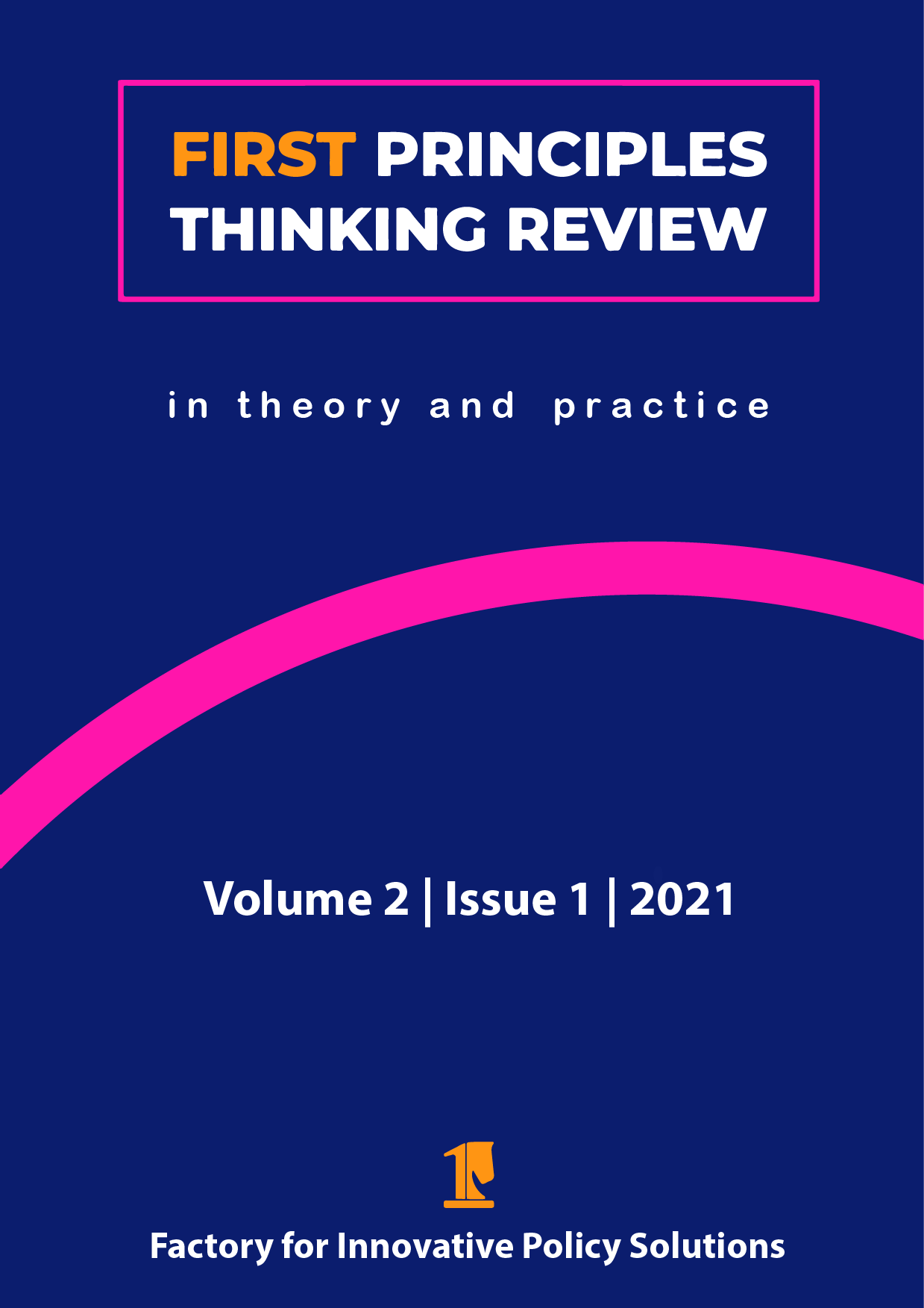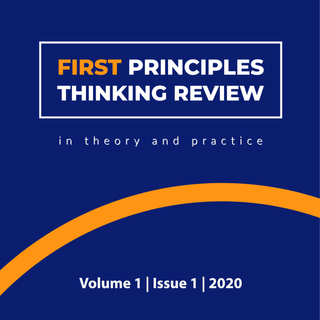Using First Principles Thinking in Marketing: How I Generated Media Attention to Help Feed the Homeless

Photo by Nico Smit on Unsplash
In this article, I expand on my experiences of using first principles thinking in the field of marketing (Ciriaco, 2020). I begin by comparing first principles thinking to reasoning by analogy before providing an outline of the method’s fundamental steps. I then share a personal case study that illustrates how first principles thinking helped me find a way to get a nonprofit organization TV coverage with zero budget. The article concludes with a discussion of when it is and is not most advantageous to use first principles thinking in your work.
Keywords: First principles thinking, reasoning by analogy, marketing solutions, non-profit
Introduction
Elon Musk uses first principles thinking to help him solve challenging problems. For someone who has built impressive companies, it’s worth exploring the framework that makes him create grand feats and applying it in marketing. So what is first principles thinking?
It’s a thought process which involves questioning assumptions about a problem and then boiling that problem down to its core. You then create solutions from there. A classic example is Elon Musk’s explanation on how to lower a battery pack from $600 per kilowatt hour to $80.
Most people assume batteries are expensive. They are if you buy them assembled. By using first principles thinking, you ask yourself “What’s a battery made of?” You find that it has cobalt, nickel, aluminium, carbon, etc. You then check the prices in the London Metal Exchange and find the parts only cost $80, a whopping 87% reduction.
Most people don’t think this way
The opposite of first principles thinking is reasoning by analogy. It’s a way of solving problems by using commonly held beliefs and assumptions. This way of thinking can be problematic. To illustrate, let’s say you are an aspiring digital marketer. You find an internet guru who sells a script he claims helped him close 100 clients. Hundreds of his students have also used it and have gotten great results.
Impressed, you buy the script and use it on your prospects. But then… crickets. It turns out, thousands of people, including your audiences, have already heard the same pitch from that script multiple times. The novelty effect wore off so it doesn’t work anymore. Reasoning by analogy made you think, “If they landed multiple clients using that script, then I will too,” and it turned out to be a wrong assumption.
One way to use first principles thinking in this situation is to take advantage of people’s desire for novelty, which activates the dopamine system when that desire has been met or when it is anticipated to be met. That’s a more solid footing for you to start on. Then, you can write multiple scripts that are novel.
So how do you use first principles thinking to make cutting-edge marketing solutions?
1) Question the assumptions about your problem
This is to avoid a blind leading the blind situation. It doesn’t help that we tend to imitate others. After all, seeing the masses do what we plan to do gives us validation that we are on the right track.
Take going to college for example. It’s a potential solution for one thing: financial freedom. The assumption is that going to college will automatically land you a good paying job. We know that’s not always entirely correct.
2) Find out the core of what you’re dealing
Let’s say you want to become a copywriter. You do some research and find the following tips:
- Appeal to your audiences’ emotions.
- Use simple words.
- Make your sentences short and concise.
- Move them away from pain and push them towards pleasure.
At the heart of those tips is a fundamental truth about becoming a copywriter:
It’s not about writing fancy words. It’s about becoming a master persuader and influencer through words.
3) Build your solution around the core
Using the example above, you can develop your copywriting skills further by stepping outside the boundaries of the tips you initially found. Studying psychology, borrowing tactics from other disciplines, and experimenting are some things you can do to advance your skills.
The obstacles to using first principles thinking
It takes a lot of brain power to use first principles thinking. Our brain is an energy hogger so we use mental shortcuts such as using commonly held beliefs to save energy and avoid cognitive friction from thinking deeply. On top of that, we have to let go of our own biases which can be emotionally draining as well.
Also, criticism from the crowd can be an issue. After all, there are a lot of cases where first principles thinking means questioning others’ beliefs. And, when their beliefs are threatened, they will defend them like treasures. It’s one thing to come up with solutions from first principles; it’s another to have the courage to make it happen. Peter Thiel, Elon Musk's former business partner said it well: "Brilliant thinking is rare, but courage is in even shorter supply than genius" (Slayback, 2014).
The rewards to using first principles thinking
It feels great to come up with cutting-edge solutions no one has ever thought of before. The case study below shows my own experience using first principles thinking in marketing. Being able to create high-impact solutions that are new and effective is no doubt satisfying.
Case study: How I got a nonprofit organization days of TV coverage with zero budget
I wanted to develop my marketing skills years ago so I offered to help a food bank for free. Their truck was falling apart and it was the only means they had to fetch food from restaurants. If it stopped functioning, a congregation of homeless people would be left without meals.
The goal was to spread the word about them, so I immediately thought of getting the local news stations involved. I avoided a reason by analogy approach which entailed cold calling and emailing a bunch of stations. After all, that was what everyone did.
So, I put on my first principles thinking hat. The first principles thinking “core” at play in this campaign involved sympathy. It’s a feeling that is baked in most people, so I used it as a lever in this campaign. These were the steps I took:
1) I explored the assumptions I had about this project
- News stations will cover any story as long as it’s interesting.
- If I reach out to them with a good story, they’ll run it.
- The story I’m giving them is a good piece.
2) I debunked those assumptions
People send them stories all the time, so the competition for their attention can be fierce. If I emailed them, it will most likely get lost in the cacophony of messages they get everyday. Also, if I call them, I’ll have to pitch my story which I wasn’t very good at. On top of that, I was a nobody. No one in those stations would give me the time of day since I was a stranger.
3) Debunking those assumptions lead me to the fundamental problems I had to face
First, if I wanted them to cover my story, I had to package it in a way that was TV-worthy. I honestly didn’t have any criteria for what makes content TV-worthy. I was also a newbie in my digital marketing endeavors so I didn’t have the neuroscience background I shared in my previous example about novelty. I did, however, know that most people are capable of feeling sympathy, and the producers at the news stations are
people.
That’s where I based my strategy off of step 4. More on that later.
Second, I needed to cut through the noise of emails that flooded the TV stations’ inboxes. But, cutting through noise is the default action people would do. It could entail doing walk-ins or finding individuals in my network who could introduce me to a producer, which are difficult and time consuming. So I asked myself, “What if I created the noise?” That’s what I did.
4) I developed a solution that got the media’s attention
I first made a heart-warming video. I interviewed the volunteers and found that they used to be homeless and drug addicts. They turned their lives around thanks to the organization. If their truck broke down, they wouldn’t have the means to pick up food for the homeless and drug addicts. With such an angle, I was able to make a compelling video.
I then had to address the noise problem—the competition for the TV stations’ attention. I made a Facebook group consisting of volunteers and members of the food bank. I showed them the plan for the campaign along with the video I made.
To my surprise, the people I initially added to the group invited their friends and families as well. The numbers went from less than 10 to about 60 members overnight. A lot of them even started sharing the video because they couldn’t wait to get it out. That was a sign to me that we could flood the producers’ emails with our campaign.
Now, whether or not the producers would respond to the message was out of my control, but my hunch was that they wouldn’t be able to ignore a story requested by 60 different people all at once.
The plan was simple. I instructed the members of the group I created to send the video to TV stations as soon as I posted it online. I even compiled a list of contacts for them to reach out to. They didn’t have to pitch anything. The video itself would do the work. The results were awesome. At the end of the campaign, about 250 people shared the video and the stations ran the story multiple times.
When first principles thinking can be inappropriate and when to use it
As much as I love first principles thinking, it would be a mistake to share it as if it’s the only way to create cutting-edge marketing campaigns. In fact, there are drawbacks to using it. First of all, it takes a lot of time and brain power. In marketing, especially in the digital world, executing an idea as early as possible is needed so one can learn fast. This is especially true when you have a long list of ideas you have to test at a fast pace.
There are also tactics and strategies that are proven to work almost every time even though they are not new anymore. If time is limited, but you know a campaign will work, there’s no point in reinventing the wheel. So when should you use first principles thinking? The simple answer is this: If your strategy and tactics aren’t working.
Conclusion
Thinking through analogies isn’t always bad, especially if they work. In fact, I do it all the time. I copy a lot of the tactics and strategies from the best marketers out there. But, it would be naive to not admit that copying and pasting can only go so far. It’s okay to borrow other people’s marketing solutions, but by using first principles thinking, we can become rogue thinkers—individuals who produce solutions that are new and effective.
References
- Ciriaco, K. (2020). How to Use First Principles Thinking to Make Cutting-Edge Marketing Solutions. Klintciriaco.com. https://www.klintciriaco.com/first-principles/
- Slayback, Z. (2014). The World According to Peter Thiel. On Breaking the Mold.
https://medium.com/on-breaking-the-mold/the-world-according-to-peter-thiel-c99a19a8ece3
Apply first principles thinking yourself?
Would you like to apply first principles thinking yourself and have your problem-solving experience published in the First Principles Thinking Review? Then be sure to check out the submission guidelines and send us your rough idea or topic proposal. Our editorial team would be happy to work with you to turn that idea into an article.
Share this page
Disclaimer : The views, thoughts and opinions expressed in submissions published by FIPS reflect those of the authors and do not necessarily reflect the views held by FIPS, the FIPS team or the authors' employer.
Copyrights : You are more than welcome to share this article. If you want to use this material, for example when writing an article of your own, keep in mind that we use cc license BY-NC-SA. Learn more about the cc license here .
What's new?
